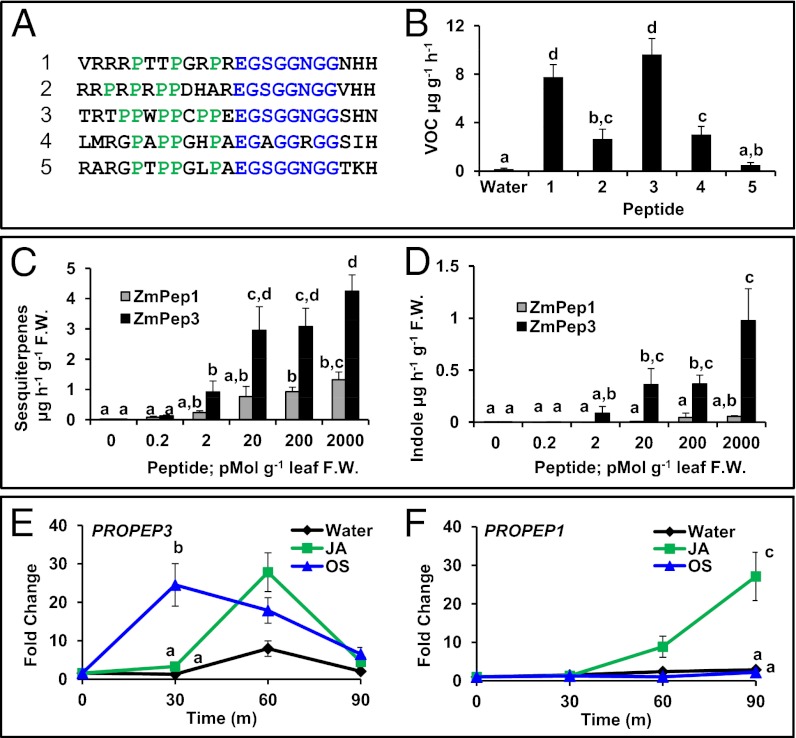Fig. 1.
Maize plant elicitor peptide 3 (ZmPep3) is an herbivory-inducible signal that regulates emission of plant volatiles. (A) Alignment of maize Pep sequences, with amino-end prolines highlighted in green and core carboxyl motifs designated in blue. (B) Total volatile organic compounds (VOCs) emitted by maize leaves 16 h posttreatment with water or with 2 nmol⋅g−1 FW of each Pep. (C) Total sesquiterpenes emitted from leaves treated with increasing doses of either ZmPep1 (gray bars) or ZmPep3 (black bars). (D) Indole emitted from ZmPep1- or ZmPep3-treated leaves. Expression of the genes encoding ZmPROPEP3 (E) and ZmPROPEP1 (F), respective precursor proteins to ZmPep3 and ZmPep1, in intact leaves treated with water (black), 100 nmol jasmonic acid (JA, green), or 5 μL S. exigua oral secretions (OS, blue) as measured by qRT-PCR. Within each plot, different letters (a–d) represent significant differences between mean values (n = 4, ± SEM; all ANOVAs, P < 0.015; Tukey test corrections for multiple comparisons, P < 0.05).

